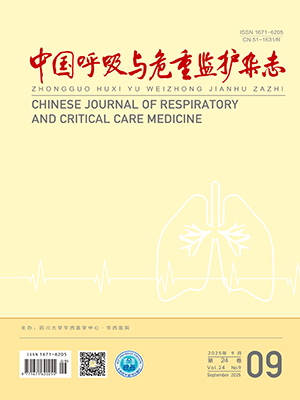Objective To investigate the effect of myeloid derived suppressor cells ( MDSCs) on airway inflammation of asthmatic mice.
Methods Five male BALB/ c mice aged 6 weeks were used for preparing 4T1 tumor bearing mice. Thirty female BALB/ c mice aged six weeks were randomly divided into a normal control group, an athmatic model group, and a cell transplantation group. The MDSCs were separated frommyeloid tissue of tumor-bearing mice using amagnetic cell sorting systemand cultured in RPMI medium 1640 containing GM-CSF. The morphologic characteristics of these cells were observed under light
microscope and the phenotypic figures were analyzed with flow cytometry. The mice in the model group and the cell transplantation group were sensitized by ovalbumin and then stimulated with nebulized ovalbumin. The mice in the cell transplantation group were intravenously administered MDSCs which purified by magnetic cell sorting system at 10 days after sensitization. The airway inflammation was evaluated by HE staining. The total and differential cell counts in bronchoalveolar lavage fluid ( BALF) were measured.
Results The neutrophil and eosinophil infiltration in pulmonary tissue was dramatically increased in the model group, but not observed in the normal control group and was much milder in the cell transplantation group. The total cell count, the eosinophil and lymphocyte counts in BALF of the model group and the cell transplantation group were significantly higher than those of the normal control group( P lt; 0. 05) , and the number of eosinophils in BALF of the cell transplantation group was decreased when compared with that of the model group( P lt;0. 05) .
Conclusion MDSCs via intravenous infusion can effectively suppress airway inflammation in a mouse asthma model.
Citation: LIAO Yuan,YU Huapeng,CHEN Xin,FAN Huizhen,GONG Yuxin.. Effects of Myeloid Derived Suppressor Cells Derived from 4T1 Tumor-Bearing Mice on Airway Inflammation of Asthmatic Mice. Chinese Journal of Respiratory and Critical Care Medicine, 2012, 11(2): 121-124. doi: Copy
Copyright © the editorial department of Chinese Journal of Respiratory and Critical Care Medicine of West China Medical Publisher. All rights reserved




